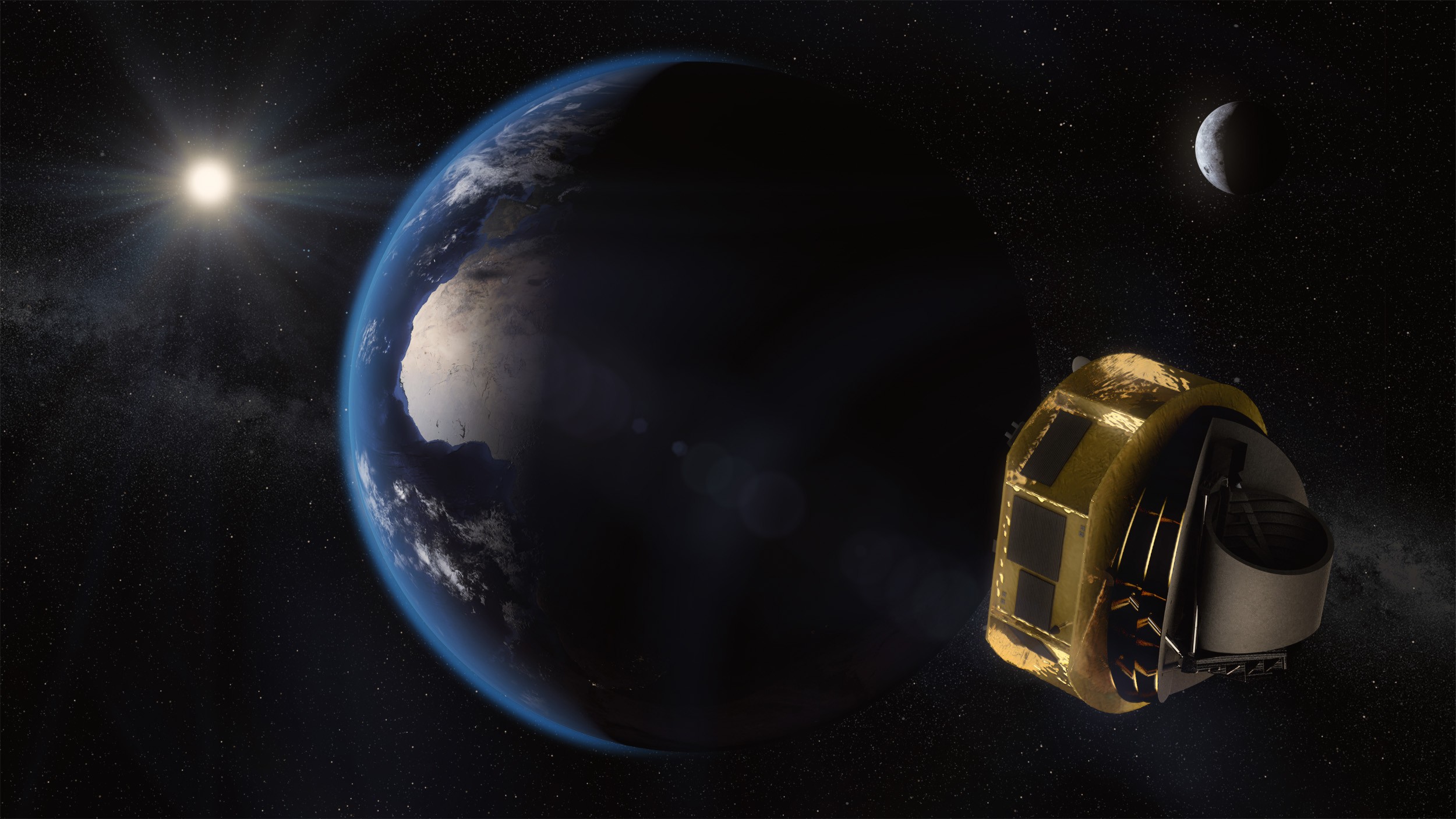ESA has just officially adopted its long-awaited Ariel mission, which aims to probe the atmosphere of a thousand exoplanets. The launch is scheduled for 2029 from Guyana.
To date, there are more than 4,000 exoplanets in our cosmic address book. What astronomers would like to do now is to study some of these worlds in more depth. This is how the European Space Agency (ESA) launched its CHEOPS mission on December 18 (CHaracterising ExOPlanet Satellite ). Its objective is to characterize several of these planets. In other words, it will be a question of estimating the precise diameter, the mass and the density of these objects in transit.
ESA is also planning another mission, dubbed Ariel (Atmospheric Remote-Sensing Infrared Exoplanet Large-survey ). Its objective this time will be to probe the atmosphere of a thousand known exoplanets to precisely determine their thermal profiles and their chemical compositions .
Selected in 2018 as part of ESA's "Cosmic Vision" program, Ariel has just been formally accepted by the agency's Scientific Program Committee on November 12 last at the end of the study phases.
Technically, Ariel will essentially consist of a 1.1-meter telescope which will work at visible and infrared wavelengths. On board, spectrometers will analyze the atmospheres of target planets (super-Earths and very hot gas giants) as they pass in front of or behind their host star.
These instruments will also help scientists look for indicators of life, such as water vapor, carbon dioxide and methane, as well as detect seasonal variations. of these atmospheres. Note that the French ESA team, made up of CNES, CEA and CNRS, must take charge of the design, production and delivery of one of these spectrometers (AIRS).
For the time being, it is not yet known who will be in charge of developing the probe. The choice of the main industrialist should normally be made during 2021. Planned to be launched in 2029 atop an Ariane 6 rocket from Kourou, French Guiana, the Ariel mission is to be placed in orbit at 1.5 million kilometers of the Earth (at the Lagrange 2 point), opposite the Sun.

Note that ESA also plans to launch in 2026 another mission named PLATO (acronym for PLAnetary Transits and Oscillations of stars ). It is a space observatory, one of the main objectives of which this time will be the discovery and characterization of Earth-like exoplanets around nearby stars.
Finally, let's remember that NASA still plans to launch its long-awaited James Webb Telescope next October. It too will be able to measure the composition of the atmospheres of nearby exoplanets, thus making it possible to estimate their degree of habitability.